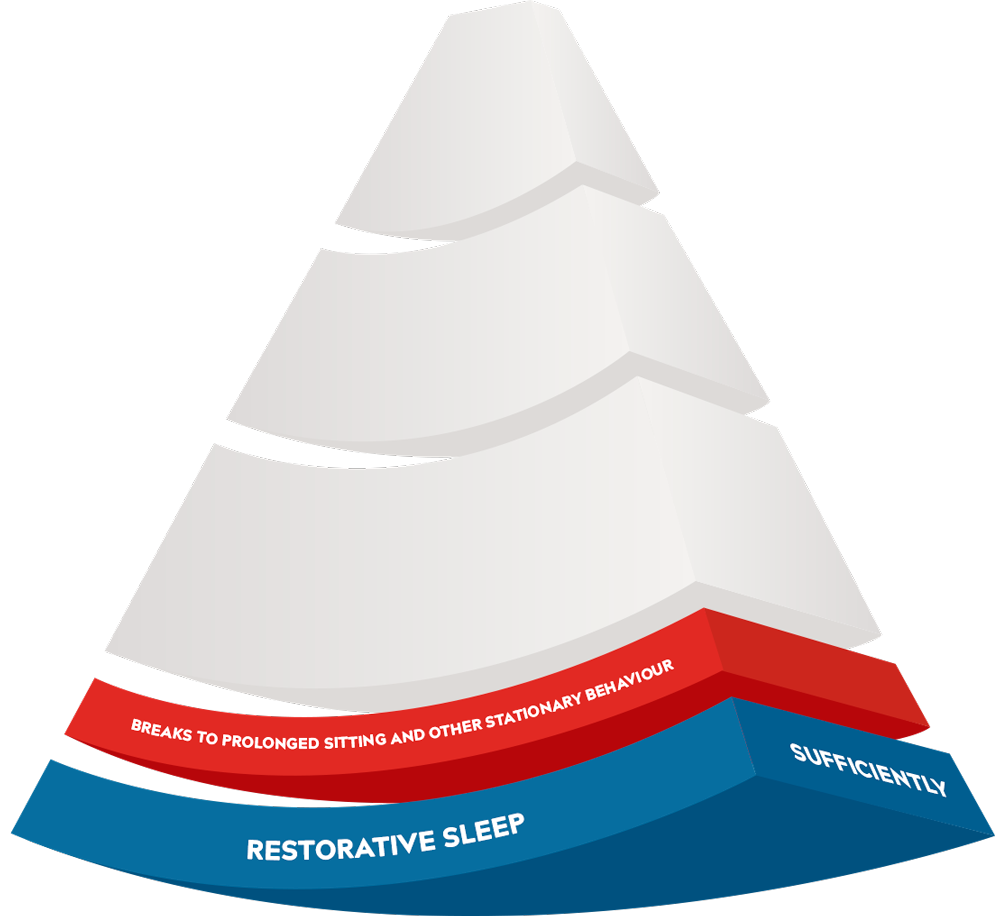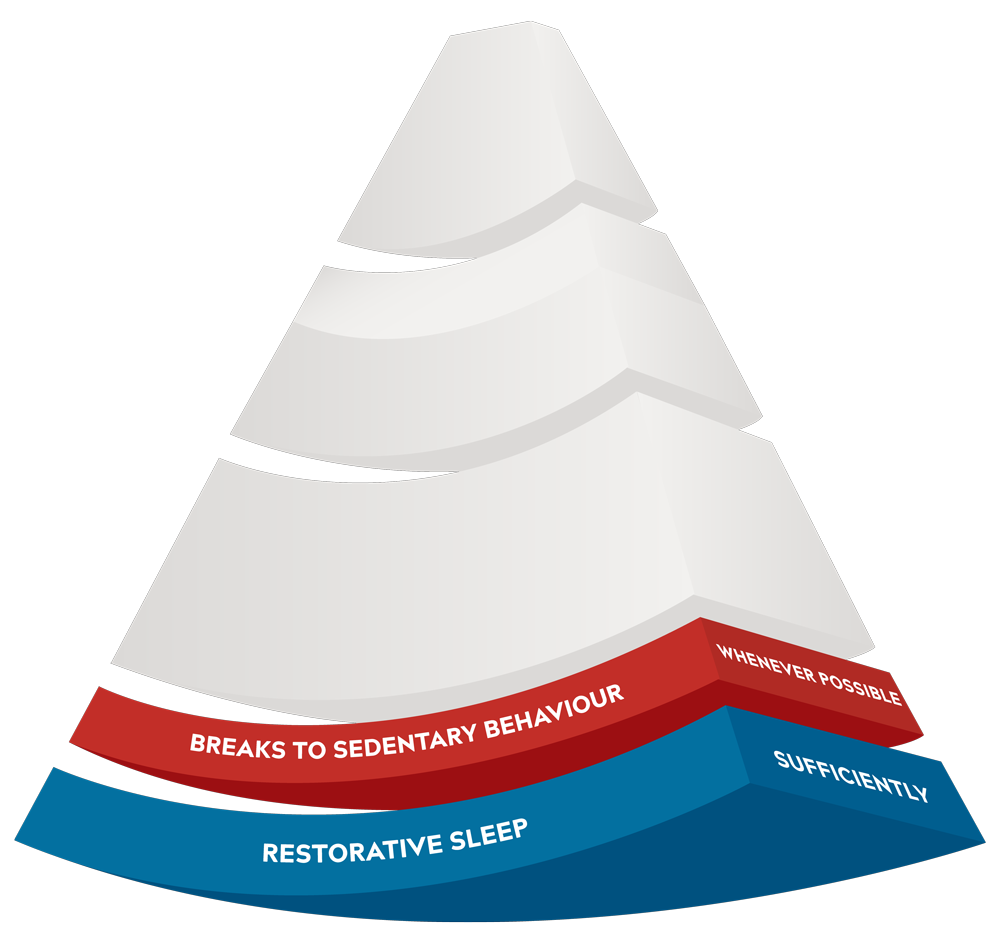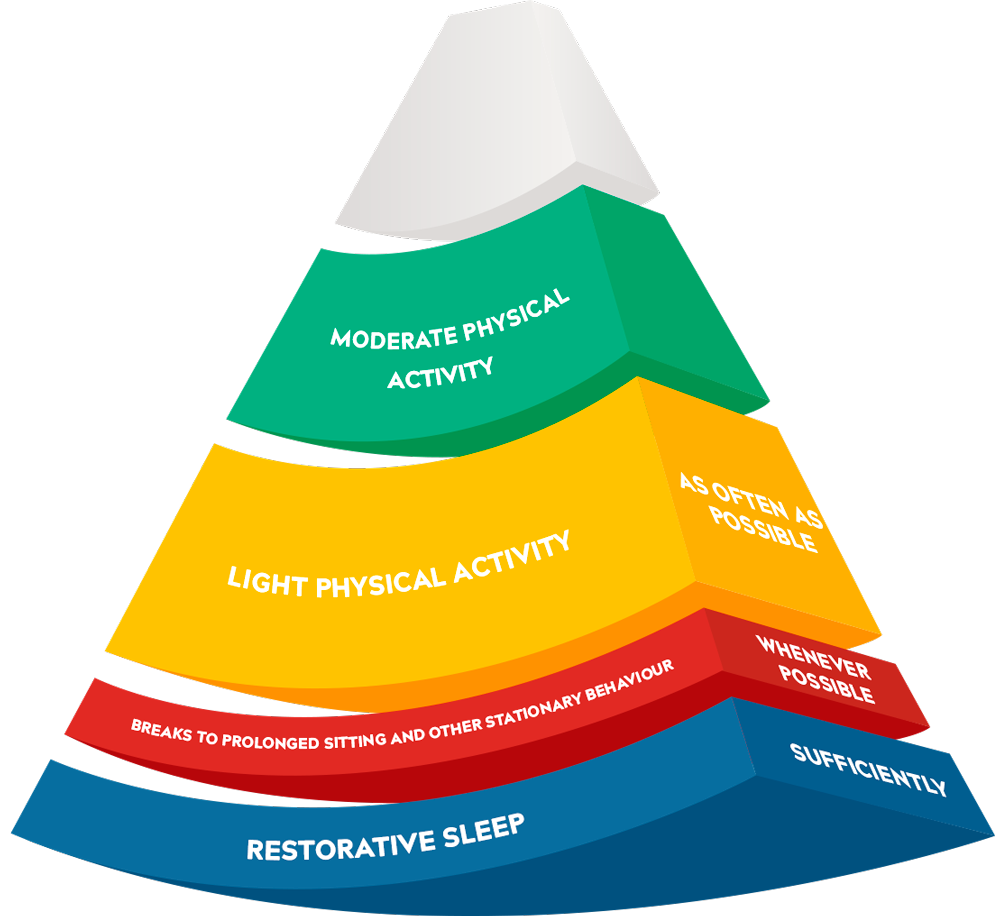Assess your physical activity
The online application helps you
- assess your current physical activity habits
- compare your habits to the physical activity recommendations.
Answer the questions based on your own assessment. For example, you can use a smart phone, a pedometer, or make notes.
The online application indicates whether your physical activity meets the recommendation and provides feedback about any needs for changes as well as tips to support those changes.
The application does not ask for your name or other personal information. The answers are saved on a server, but they cannot be linked to any individual person. The answers are used to develop the application and describe the physical activity of the respondents. Read the privacy statement.

Choose which physical activity recommendation you want to proceed with
You can only choose one option. Please note that the app is only intended for people over 18 years of age. There is a separate online application for 10–17 year olds.
Part 1/6
Restorative sleep
Consider the amount and quality of your sleep with regard to feeling refreshed and alert the following day.
Amount of sleep
In your opinion, how often do you get enough sleep?
Quality of sleep
In your opinion, how often do you sleep well enough?

Part 1/6
Feedback: Restorative sleep
The amount of restorative sleep you get is alarmingly low. Go to the summary page of the application to read some tips.
Recommendation:
Adequate restorative sleep.
The need for sleep is individual. Most adults need 7–9 hours of sleep each night.
The need for sleep is individual. Most older adults need 7–9 hours of sleep each night.
An adequate amount of good quality sleep
- improves concentration and perception
- has a positive effect on your mood
- enhances heart and brain health
- reduces susceptibility to accidents.
Sleeping too much can also be a sign of health problems.
There is room for improvement in the amount and quality of your sleep. Go to the summary page of the application to read some tips.
Recommendation:
Adequate restorative sleep.
The need for sleep is individual. Most adults need 7–9 hours of sleep each night.
The need for sleep is individual. Most older adults need 7–9 hours of sleep each night.
An adequate amount of good quality sleep
- improves concentration and perception
- has a positive effect on your mood
- enhances heart and brain health
- reduces susceptibility to accidents.
Sleeping too much can also be a sign of health problems.
It looks like you’re getting a reasonable amount of restorative sleep. Go to the summary page of the application to read some tips.
Recommendation:
Adequate restorative sleep.
The need for sleep is individual. Most adults need 7–9 hours of sleep each night.
The need for sleep is individual. Most older adults need 7–9 hours of sleep each night.
An adequate amount of good quality sleep
- improves concentration and perception
- has a positive effect on your mood
- enhances heart and brain health
- reduces susceptibility to accidents.
Sleeping too much can also be a sign of health problems.
Looks good! Try to ensure that you get enough restorative sleep in the future.
Recommendation:
Adequate restorative sleep.
The need for sleep is individual. Most adults need 7–9 hours of sleep each night.
The need for sleep is individual. Most older adults need 7–9 hours of sleep each night.
An adequate amount of good quality sleep
- improves concentration and perception
- has a positive effect on your mood
- enhances heart and brain health
- reduces susceptibility to accidents.
Great! Keep up the good work. Try to ensure that you continue to get enough restorative sleep in the future.
Recommendation:
Adequate restorative sleep.
The need for sleep is individual. Most adults need 7–9 hours of sleep each night.
The need for sleep is individual. Most older adults need 7–9 hours of sleep each night.
An adequate amount of good quality sleep
- improves concentration and perception
- has a positive effect on your mood
- enhances heart and brain health
- reduces susceptibility to accidents.

Part 2/6
Breaks to sedentary behaviour
Consider the time you are sedentary (for extended bouts) during a normal day. For example, think about how much time you spend sitting, lying down and standing at home, at work, during hobbies and in vehicles.
Consider the time you are sedentary (for extended bouts) during a normal day. For example, think about how much time you spend sitting and lying down at home, during hobbies and in vehicles.
How often do you utilise opportunities to take breaks to your sedentary behaviour during normal days? Examples: changing position, standing up from a sitting position, walking around.


Part 2/6
Feedback: Breaks to sedentary behaviour
There is room for improvement in your habits. Could you utilise the opportunities better? For example, by stretching, changing your position or location, or standing up (whenever possible).
Recommendation:
Take breaks to your sedentary behaviour whenever possible.
Extended bouts of sedentary behaviour cause monotonous strain on the body.
There is some room for improvement in your habits. Could you utilise the opportunities better? For example, by stretching, changing your position or location, or standing up (whenever possible).
Recommendation:
Take breaks to your sedentary behaviour whenever possible.
Extended bouts of sedentary behaviour cause monotonous strain on the body.
Looks good! Could you utilise the opportunities better? For example, by stretching, changing your position or location, or standing up (if possible).
Recommendation:
Take breaks to your sedentary behaviour whenever possible.
Great, keep up the good work!
Recommendation:
Take breaks to your sedentary behaviour whenever possible.
For example, taking breaks to sedentary behaviour
- enhances lipid and sugar metabolism
- improves blood circulation
- increases energy consumption
- improves back and joint mobility
- has a positive effect on your mood.


Part 3/6
Light physical activity
Consider your light physical activity during a normal day. Light physical activity does not cause shortness of breath, and it usually happens in conjunction with other activities.
Examples: household chores, shopping trips and working in the yard.
How often do you utilise opportunities for light physical activity during normal days?


Part 3/6
Feedback: Light physical activity
There is room for improvement in your habits. Could you better utilise the opportunities for light physical activity?
Recommendation:
Light physical activity as often as possible.
Light physical activity, even in small bouts, is an easy way to increase the overall amount of physical activity. It is beneficial for health and increases daily energy consumption without you even noticing.
Household chores, shopping trips, outdoor activity with family and friends, and other everyday activities provide opportunities for light physical activity.
There is some room for improvement in your habits. Could you better utilise the opportunities for light physical activity?
Recommendation:
Light physical activity as often as possible.
Light physical activity, even in small bouts, is an easy way to increase the overall amount of physical activity. It is beneficial for health and increases daily energy consumption without you even noticing.
Household chores, shopping trips, outdoor activity with family and friends, and other everyday activities provide opportunities for light physical activity.
Looks good! Could you utilise the opportunities for light physical activity even more frequently?
Recommendation:
Light physical activity as often as possible.
All light physical activity is beneficial to your health and increases daily energy consumption without you even noticing.
Great! Keep up the good work.
Recommendation:
Light physical activity as often as possible.
All light physical activity is beneficial to your health and increases daily energy consumption without you even noticing.


Part 4/6
Moderate or vigorous physical activity
Moderate physical activity
Moderate physical activity
Consider your moderate physical activity during a normal week. Your physical activity is moderate if you are able to talk despite shortness of breath. For example, intensity equivalent to brisk walking.
Consider your moderate physical activity during a normal week. Your physical activity is moderate if you are somewhat short of breath. For example, intensity equivalent to brisk walking.
Consider your moderate physical activity during a normal week. Your physical activity is moderate if you are somewhat short of breath. For example, intensity equivalent to brisk wheelchairing.
How much moderate physical activity do you get during a normal week?
Vigorous physical activity
Consider your vigorous physical activity during a normal week. Your physical activity is vigorous if it’s hard to talk because you’re short of breath. For example, intensity equivalent to jogging or running.
Consider your vigorous physical activity during a normal week. Your physical activity is vigorous if you are very short of breath. For example, intensity equivalent to climbing stairs.
Consider your vigorous physical activity during a normal week. Your physical activity is vigorous if you are very short of breath. For example, intensity equivalent to climbing hills.
Consider your vigorous physical activity during a normal week. Your physical activity is vigorous if you are very short of breath. For example, intensity equivalent to vigorous wheelchairing.
How much vigorous physical activity do you get during a normal week?


Part 4/6
Feedback: Moderate or vigorous physical activity
Feedback: Moderate physical activity
Now is a good time to start. Increase your moderate physical activity by a few minutes each day, for example, by choosing the stairs instead of using a lift whenever possible.
Now is a good time to start. Increase your moderate physical activity by a few minutes each day, for example, by uphill wheeling.
Well done, you’ve made a good start. Continue increasing your moderate physical activity by a few minutes each day, for example, by choosing the stairs instead of using a lift whenever possible.
Well done, you’ve made a good start. Continue increasing your moderate physical activity by a few minutes each day, for example, by uphill wheeling.
Good work, your level of physical activity is getting close to the minimum recommendation. You can meet the recommendation by being moderately active during daily shopping and commuting.
Great, the amount of your moderate and/or vigorous physical activity meets the minimum recommendation and enhances your health in many ways. Keep up the good work. Increase health benefits and earn 4 stars by exceeding the minimum amount in the recommendation, for example, by 1.5 hours of moderate physical activity.
Excellent, your physical activity clearly exceeds the minimum recommendation and you also get more health benefits. Avoiding monotonous physical activity, varying the intensity of activities and allowing adequate time for recovery is important to prevent unilateral overload of the body as well as physical activity-related injuries.
Recommendation:
At least 2 hours and 30 minutes of moderate physical activity per week.
Regular physical activity during pregnancy
- improves physical fitness and helps to manage the physical strain of pregnancy
- speeds up the recovery after delivery
- has a positive effect on your mood
- helps to prevent excessive weight gain and decreases the risk of gestational diabetes.
Recommendation:
At least 2 hours and 30 minutes of moderate physical activity per week OR 1 hour and 15 minutes of vigorous physical activity per week OR a combination of these.
Physical activity can make you feel better immediately.
- It will have a positive effect on your mood.
- Your thoughts will be sharper.
- Your feeling of stress will be reduced.
- You will sleep better.
Regular and diverse physical activity helps to prevent and treat many diseases, such as
- various cardiovascular diseases
- type 2 diabetes
- some types of cancer.
Recommendation:
At least 2 hours and 30 minutes of moderate physical activity per week OR 1 hour and 15 minutes of vigorous physical activity per week OR a combination of these.
Regular physical activity after delivery
- improves physical fitness and ability to cope
- has a positive effect on your mood and supports mental well-being
- helps you return to pre-pregnancy weight.


Part 5/6
Muscle strengthening and balance activities
Consider physical activity that works your muscles, challenges your balance and maintains your flexibility.
If the physical activity you reported earlier also includes this type of activity, enter it here as well.
How many times do you get this kind of physical activity during a normal week?



Part 5/6
Feedback: Muscle strengthening and balance activities
Now is a good time to start. Go to the summary page of the application to read some tips.
You’re on the right path. Adding another bout of this type of physical activity to your week will increase the health benefits. Depending on your functional ability, you can start by lifting hand weights or bending your body from one side to the other.
You’re on the right path. Adding another bout of this type of physical activity to your week will increase the health benefits. You could start by doing sit ups, balancing with one foot behind the other or on one foot, or stretching while you watch TV.
Great! You meet the minimum recommendation for physical activity in this area. Keep up the good work. You will get more health benefits and earn 4 stars if your physical activity exceeds the minimum recommendation.
Excellent!Your physical activity exceeds the minimum recommendation! Avoid monotonous physical activity, vary the intensity of activities and allow adequate time for recovery. This prevents unilateral overload of the body as well as physical activity-related injuries.
Recommendation:
At least two bouts of muscle strengthening and balance activities per week.
Suositus:
At least two bouts of muscle strengthening and balance activities per week.
Muscle strength and endurance training
- increases muscle mass and strengthens your muscles
- improves sugar and lipid metabolism
- strengthens the bones
- prevents, treats and rehabilitates musculoskeletal disorders.
Motor skills training
- improves balance
- increases control of positions and movements
- prevents falls.
Flexibility training
- reduces muscle stiffness
- maintains joint mobility.
All these combine to support your physical activity and functional ability and reduce the risk of injuries.



Part 6/6
Summary
Check whether you meet the recommendation:
Which components do you think you’re already doing well in?
Which components have room for improvement, and what could you do to improve the situation?
Muscle strengthening and balance activities
Moderate or vigorous physical activity
Moderate physical activity
Light physical activity
Breaks to sedentary behaviour
Restorative sleep





Physical activity for health!
Physical activity for health and vitality!
Feeling good during pregnancy!
Boosting mood during postpartum!
Wellbeing through physical activity!
Move your way.
Every day.
If necessary, you can ask for more guidance at your maternity/child health clinic or from physical activity and healthcare professionals. For example, learn more about the services offered by your municipality, sports clubs, organisations or fitness centres.
If necessary, you can get more instructions from physical activity or healthcare professionals. For example, learn more about the services offered by your municipality, sports clubs, organisations or fitness centres.
